A Short History Of Heraklion City
- December 18, 2021
- Elani News
Heraklion’s history goes way back, to the Minoan Era (3500 – 2100 BC). Knossos (characterized as Europe’s oldest city) used a port…
Read More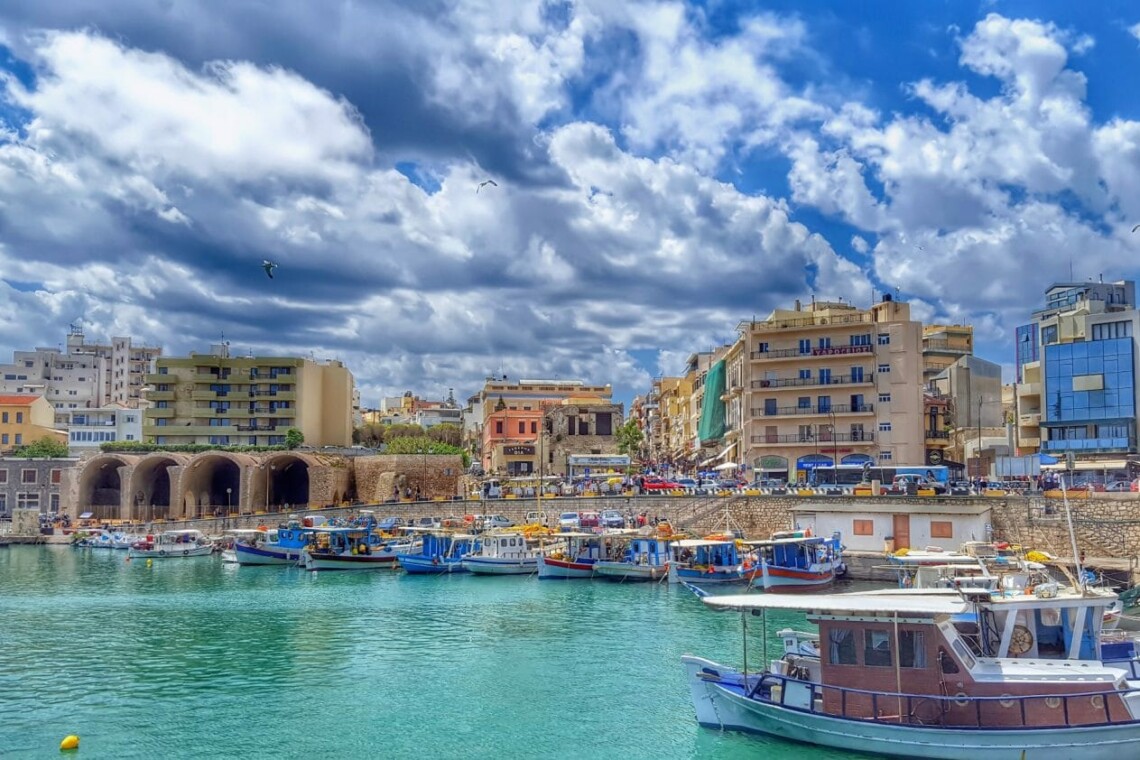
The capital of Crete, Heraklion is a port with a long and compelling story to tell. Over the centuries the city has been controlled by the Byzantines, Moors, Venetians and Ottomans before joining modern Greece in the 20th century.
The Venetians were in charge all through the late Medieval and Renaissance periods, when they built sophisticated, four kilometre defences that would withstand an Ottoman siege for 21 years. Much earlier, Knossos, in the hills to the south, was a centre for the Minoan Civilisation and has been called Greece’s oldest city.
The palace complex at the archaeological site is a maze of ruins, with walls still coated with colourful frescoes thousands of years old. Many Minoan treasures are kept at the Heraklion Archaeological Museum, the best place in the world to study this civilisation.
Let’s explore the best things to do in Heraklion:
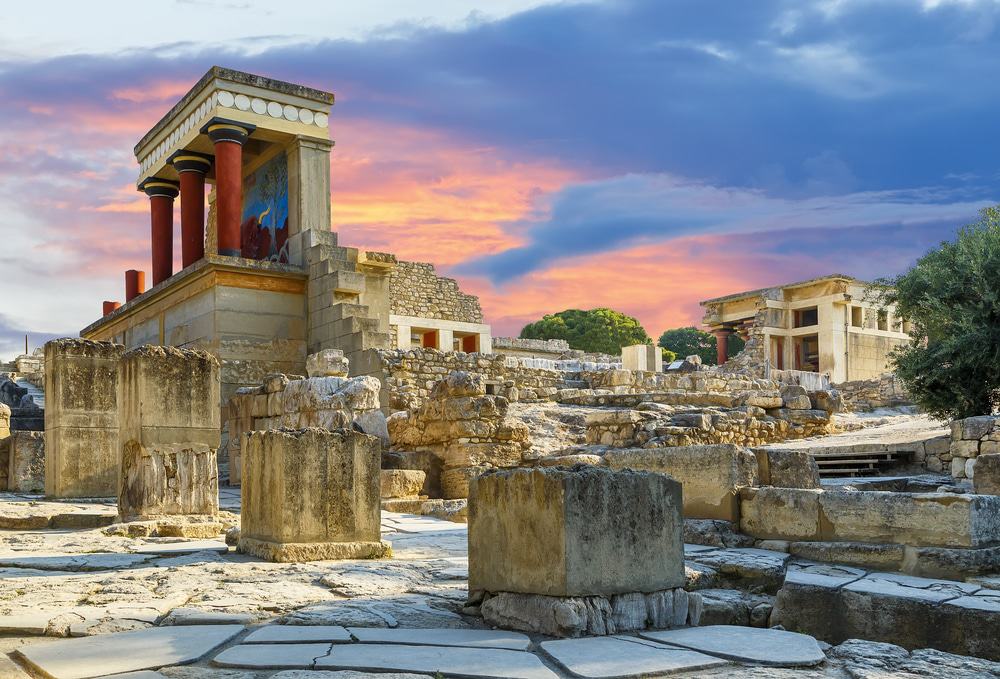
Knossos Palace
Source: Timofeev Vladimir / shutterstock
Knossos Palace
At semi-mythical Knossos is a Bronze Age city and palace built by the Minoan civilisation.
The site has been inhabited for around 9,000 years and reached its zenith about 2000 BC when the palace was built.
You may know Knossos from the many Greek mythological figures associated with the city and palace, like King Minos, the Minotaur, and Daedalus and Icarus.
Investigating the labyrinthine ruins of the palace on Kephala Hill, you’ll learn about ancient earthquakes and wars, and see the highly sophisticated architecture furnished with plaster, beams, light wells, drainage and water supply systems.
The Throne Room, Sacred Repositories and Pillar Crypts are outstanding in the west wing, while the east wing held the residential apartments and reception halls.
To the south is the Corridor of Procession and entrance with the Prince of Lilies fresco, while to the north is the beguiling Bull Hunt fresco.
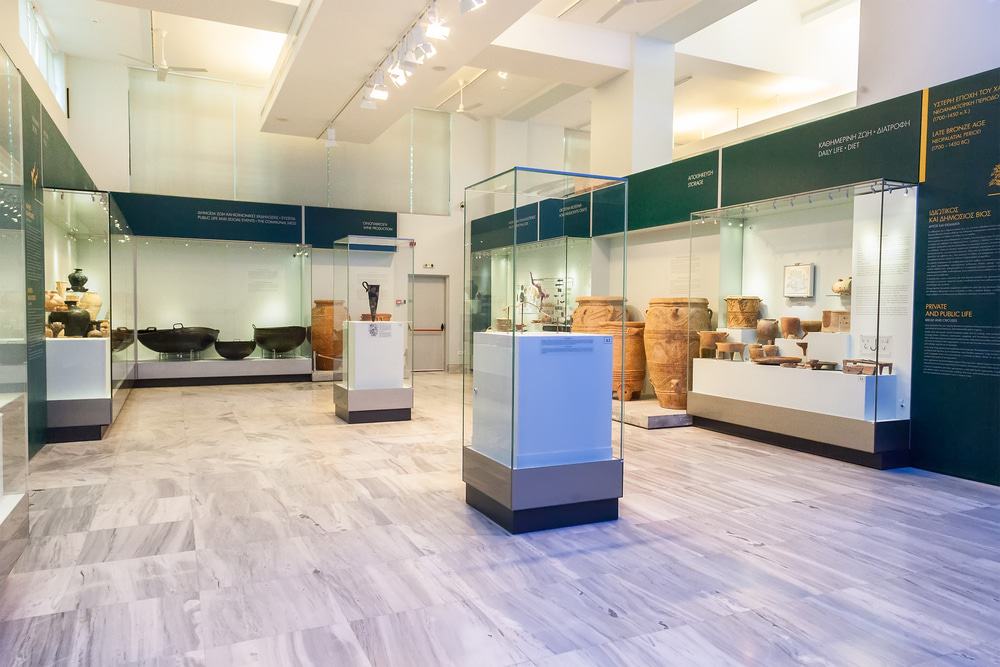
Heraklion Archaeological Museum
Source: Anna Pakutina / shutterstock
Heraklion Archaeological Museum
There’s no better museum in the world to dip into Minoan history.
Finds from Minoan sites all over Crete have been brought here, and many of the exhibits are masterpieces of ancient art.
One breathtaking example is the iconic and life-sized Prince of the Lilies, from the fresco at the entrance to the Palace of Knossos, composed around 1600-1500 BC. Or there’s the Phaistos Disc from the palace of the same name, a clay disc 15cm in diameter, covered with 241 tokens, the meaning of which is still disputed today.
Other extraordinary works include the Snake Goddess figurines, the bee pendant from Malia, the mesmerising bull’s head rhyton from Knossos and a huge array of decorative weapons, pottery, frescoes, clay figurines and gold jewellery.
Recommended tour: Archaeological Museum of Heraklion: Guided Walking Tour
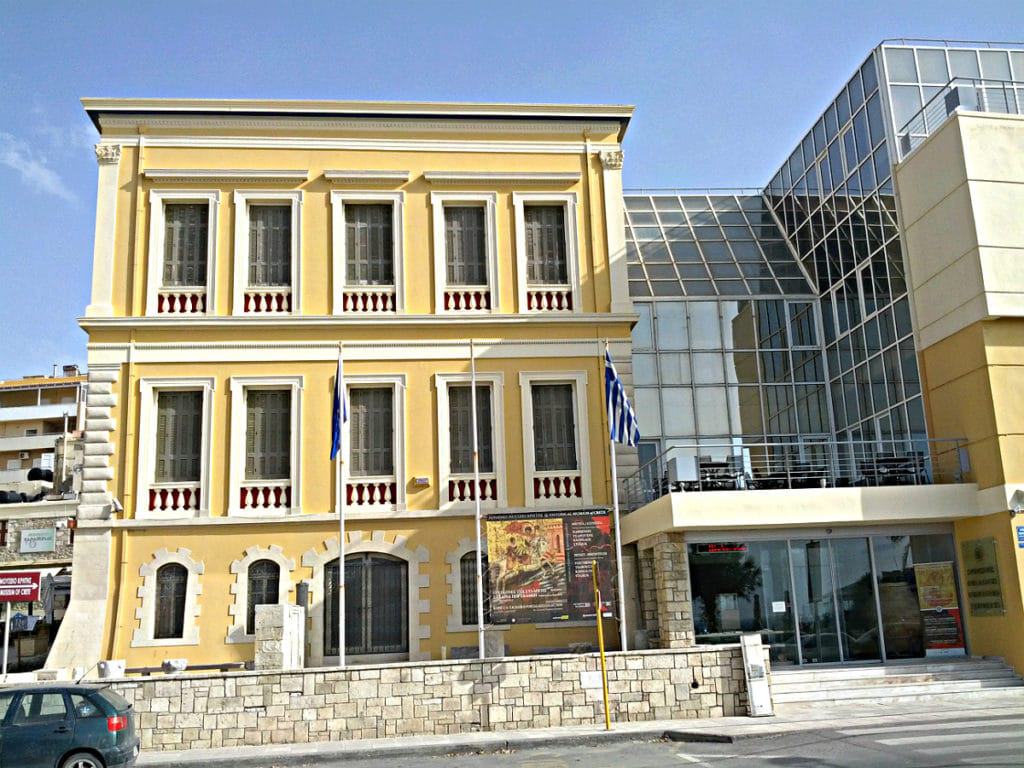
Historical Museum Of Crete
Source: Lourakis / Wikimedia
Historical Museum Of Crete
If you want to fill in the gaps and find out what came after the Minoans, this museum has a complete timeline for the island beginning in the 4th century AD. In the galleries are sculptures, frescoes, jewellery, coins, manuscripts, architectural fragments, woven art, cannons, portable religious icons, ceramics and more.
A model measuring 4 x 4 metres also shows how Heraklion looked during Venetian times.
Extra attention is paid to the Battle of Crete from the 20 May to 1 June 1941, in which Axis forces conquered the island, but only after heavy losses.
Another feather in the museum’s cap is that it has the only two paintings by the Crete-born Renaissance master El Greco remaining on the island.
These are the Baptism of Christ and View of Mount Sinai.
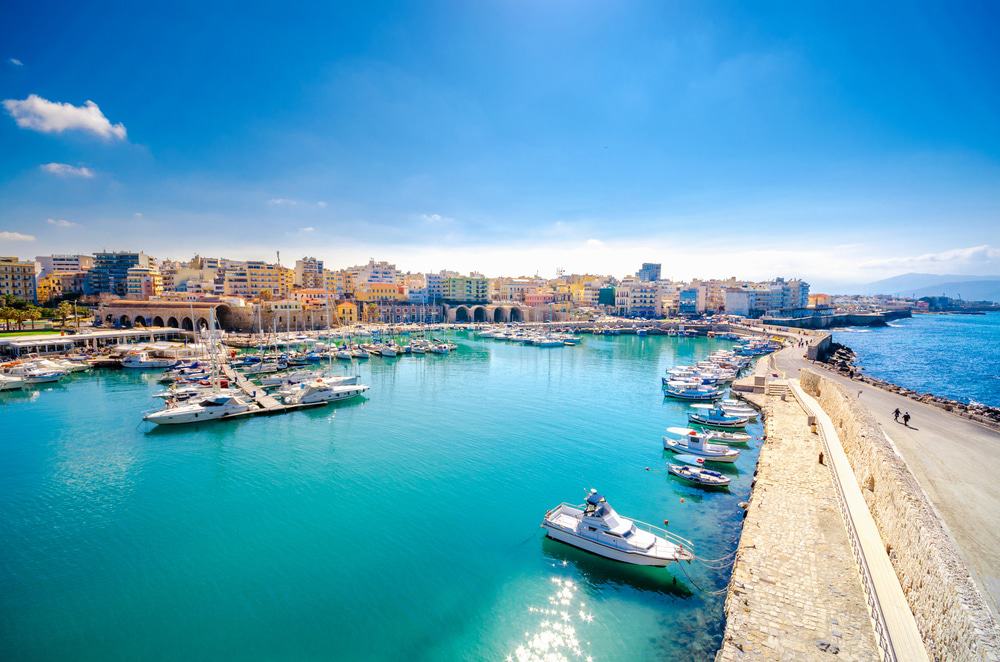
Venetian Harbour, Heraklion
Source: Georgios Tsichlis / shutterstock
Venetian Harbour
In a pocket to the west of Heraklion’s new harbour is where the city’s maritime activity happened in Venetian times.
At the mouth of the harbour is the Koules Fortress, which we’ll talk about next.
On dry land, facing the water there are two separate rows of arches, the vestiges of Venetian arsenals or shipbuilding warehouses.
These structures give a small hint of just how sophisticated Venetian maritime activity was in those times.
You can carry on along the mole, past the fortress to look back at the enormous cruise liners in the modern port.

Koules Fortress, Heraklion
Source: Mila Atkovska / shutterstock
Koules Fortress
Guarding the Venetian harbour is a square-shaped fort built when the island was under the control of the Republic of Venice in the 16th century.
Koules Fortress went up between 1524 and 1540 and took the place of an earlier fort built after the Venetians first took Heraklion in the 1200s.
It’s no mystery why Koules Fortress has stood the test of time, as it was built to last, and has external walls up to 8.7 metres thick.
The building was involved in the second-longest siege of all time, during the Siege of Candia (Heraklion), when the Ottomans were at the gates for 21 years from 1648 to 1669 before the city finally fell.
The fort’s upper level has a clear view of the harbour, while in the vaulted passageways below are cannons, hundreds of cannonballs, piles of amphorae, information panels and a brief film about the history of the fort.
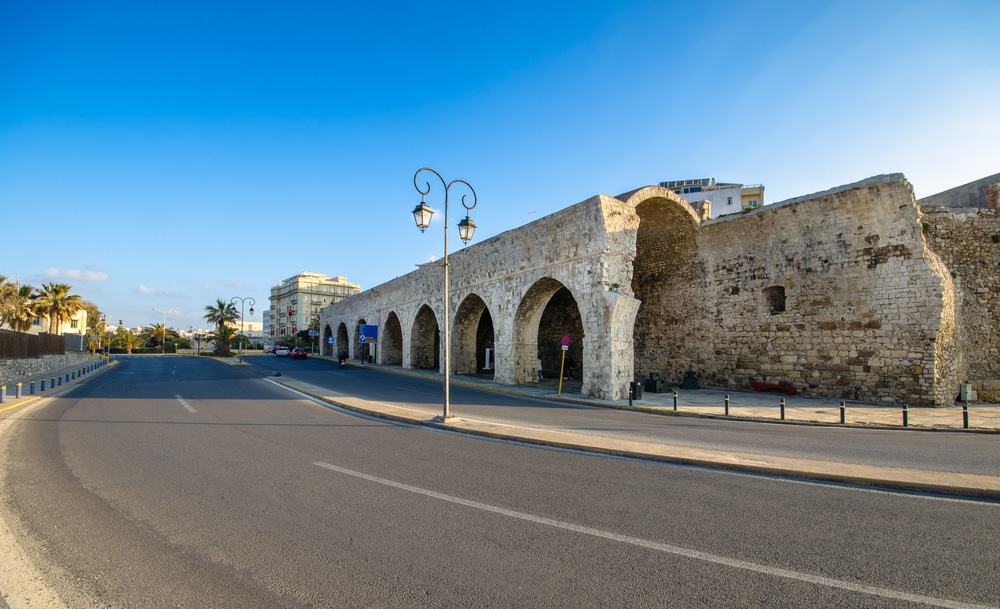
Venetian Walls, Heraklion
Source: Georgios Tsichlis / shutterstock
Venetian Walls
Heraklion has had a wall of some kind since the First Byanzatine Period beginning in the 4th century.
This was bolstered by the Moors in the 9th and 10th centuries, and again by the Byzantines after they retook the city.
But it was the Venetians, responding to the growing threat from the Ottoman Empire, who went the extra mile.
From 1462 to 1560 they constructed an almost unsurpassable, four-kilometre system of fortifications with four gates and seven bastions, all surrounded by a moat.
Laid out in straight lines, these walls helped keep the Ottomans at bay during that 21-year siege, said to have cost 100,000 Turkish lives: They finally made their breakthrough at the western St Andrew Gate in 1669. You can find this fateful spot, and set off on an adventure over ramparts and through Renaissance arcades and passageways.
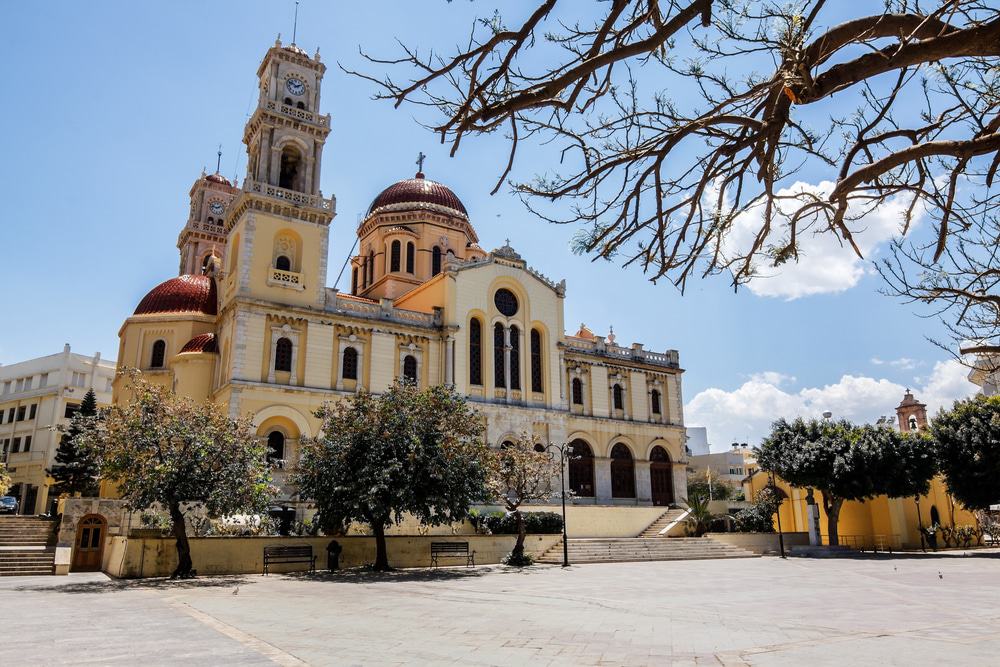
Agios Minas Cathedral
Source: Aphotog / shutterstock
Agios Minas Cathedral
With room for 8,000 worshippers, the Agios Minas Cathedral is one of the largest in Greece.
It was built across 30 years in the second half of the 19th century, and the project was delayed by the Cretan Revolt against Ottoman rule in 1866-1869. An interesting side note is that construction was partly funded by the Sultan of the Ottoman Empire, Abdülaziz.
Inside allow a few minutes to appreciate the Byzantine-style frescoes of apostles, bible episodes, and Christ Pantocrator in the crown of the main dome.
Another bold fitting is the iconostasis, made of marble and replacing the wooden original in the 20th century.
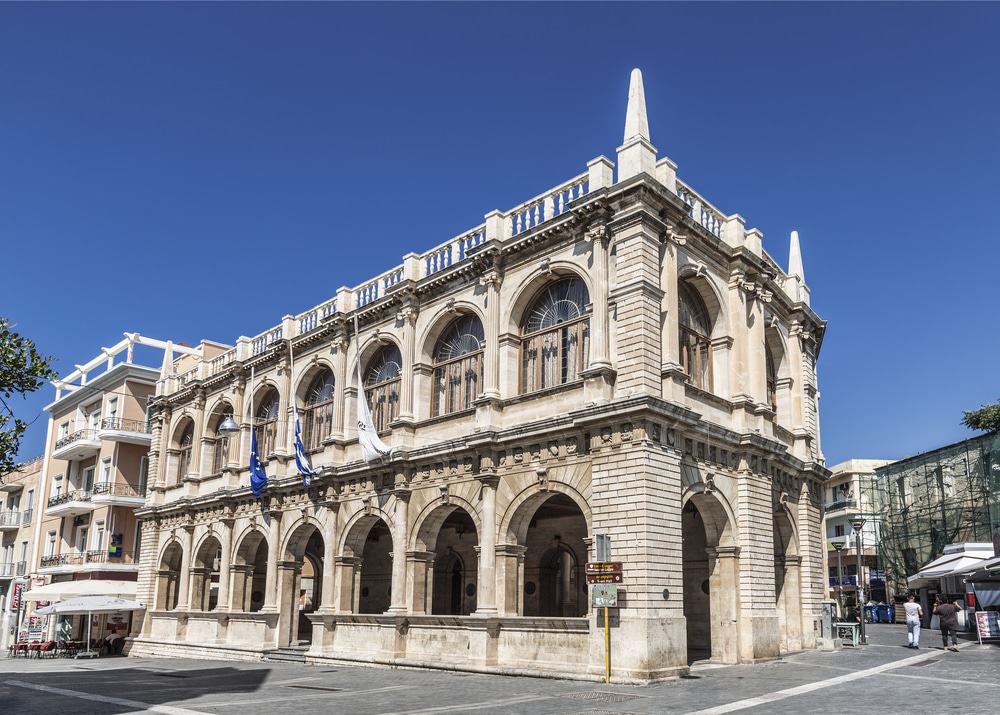
Venetian Loggia, Heraklion
Source: volkova natalia / shutterstock
Venetian Loggia
This 17th-century Mannerist monument on St Titus’ Square is a holdover from Heraklion’s Venetian days.
The loggia was where Heraklion’s nobility would meet to thrash out political and commercial matters.
In Ottoman times the Loggia became the seat of the high finance officer, as well as the secretary general who was responsible for mediating between Heraklion’s Christians and the Turkish authorities.
By the end of the 19th century the Loggia was in a state of disrepair, and wouldn’t be restored until after the Second World War.
Since then the building has been a town hall, hosting the weekly meeting of the Municipal Council.
The Loggia is closed to visitors, but you can look around the arcade on the ground floor.
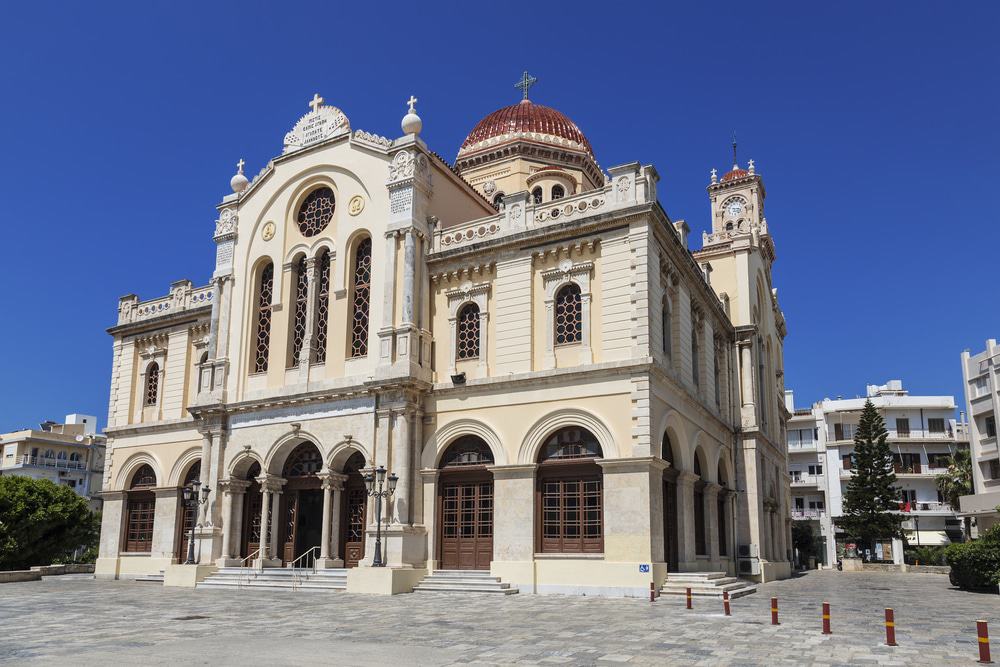
St Catherine of Sinai, Heraklion
Source: volkova natalia / shutterstock
St Catherine of Sinai, Heraklion
Next to the cathedral on St Catherine Square is a former monastery church founded in the 10th century.
The surviving church building dates to the 16th century, and at that time it was also a school for science, literature and art.
It is believed that Doménikos Theotokópoulos (El Greco) was one of the pupils.
Another, Michael Damaskinos, is regarded as one of the most accomplished post-Byzantine Cretan painters, and the star of the Cretan School.
He may well have painted the six marvellous icons that form the centrepiece of the museum for Christian art inside the church.
Also on show are paintings, manuscripts, vestments and wooden sculptures.
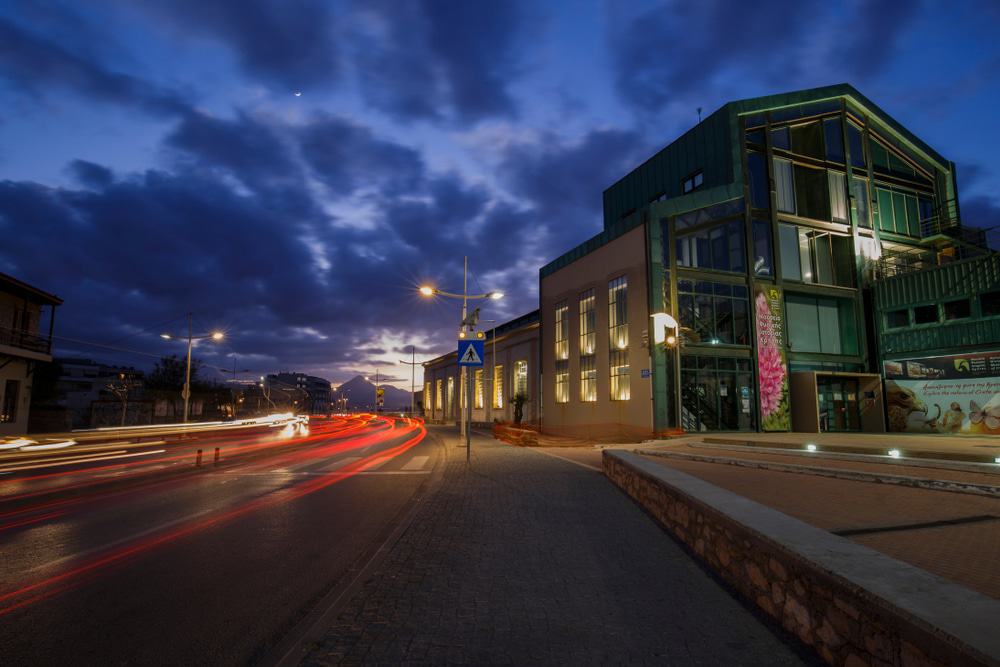
Natural History Museum of Crete, Heraklion
Source: Aphotog / shutterstock
Natural History Museum of Crete, Heraklion
Run by the University of Crete, the Natural History Museum has a remarkable venue in a converted former power plant.
The exhibitions cover the zoology and botany of the eastern Mediterranean region, as well as Crete’s palaeontology, mineralogy and geology.
You can get a sense of Crete’s wildlife and ecosystems in highly detailed “Mega-Dioramas”, and see the island’s fish, insects and reptiles for yourself in the terrariums and aquariums at the “Living Museum”. Crete isn’t a stranger to seismic activity, and was the epicentre of an infamously destructive earthquake in the year 365 AD: At the “Seismic Table” you can experience an earthquake for yourself and get some facts about the science behind them.